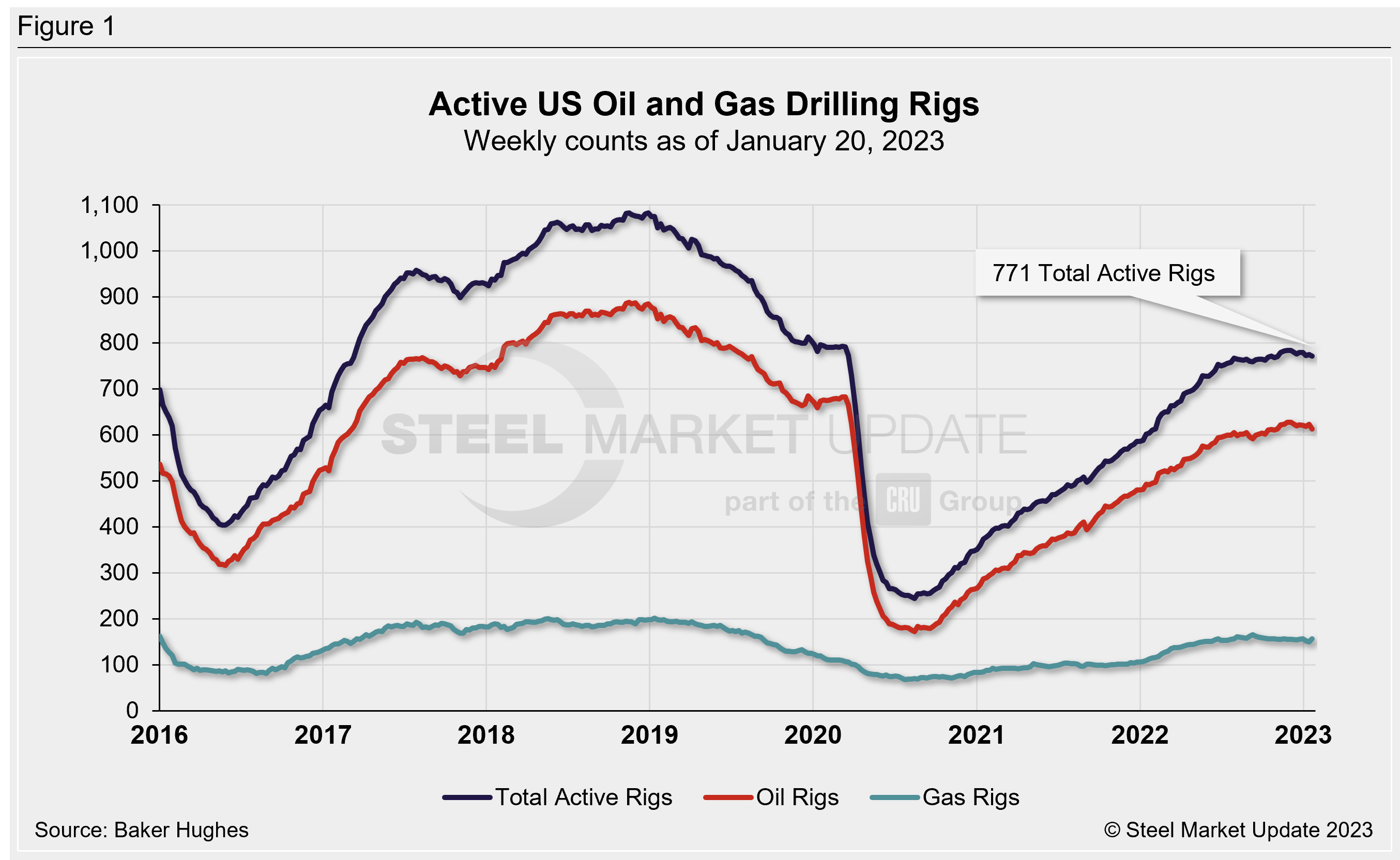Canada
January 27, 2023
Canadian Rig Count Increases, US Count Flat
Written by Becca Moczygemba
The Canadian rig count increased again, and US rig count was unchanged, according to data from oilfield services company Baker Hughes.
The number of oil and gas rigs in operation is important to the steel industry because it is a leading indicator of demand for oil country tubular goods (OCTG), a key end-market for steel sheet.
The total rig count in the US remains at 771. The number of active oil rigs declined to 609, down four from the week prior, while the number of gas rigs increased by four to a total of 160 over the same period. Miscellaneous rigs were unchanged at two. Compared to this time last year, the US count is up 161 rigs, with oil rigs up 114, gas rigs up 45, and miscellaneous rigs up two, respectively.


The Canadian rig count is up for the fourth consecutive week, with oil rigs at 157 and gas rigs at 90. This week’s Canadian count is up 30 rigs compared to last year, with oil rigs up 22 and gas rigs up 8, respectively.

The international rig count decreased by 10 to 900 rigs for the month of December but is up 66 rigs from the same month one year ago.
For more in-depth information on the energy market, Steel Market Update publishes an “Energy Update” report each month covering oil and natural gas prices, detailed rig count data, and oil stock levels. Our November report is available here for Premium members.
For a history of both the US and Canadian rig count, visit the Rig Count page on the Steel Market Update website here.
About the Rotary Rig Count
A rotary rig is one that rotates the drill pipe from the surface to either drill a new well or to side track an existing one. Wells are drilled to explore for, develop and produce oil or natural gas. The Baker Hughes Rotary Rig count includes only those rigs that are significant consumers of oilfield services and supplies.
The Baker Hughes North American Rotary Rig Count is a weekly census of the number of drilling rigs actively exploring for or developing oil or natural gas in the US and Canada. Rigs considered active must be on location and drilling. They are considered active from the time they break ground until the time they reach their target depth.
The Baker Hughes International Rotary Rig Count is a monthly census of active drilling rigs exploring for or developing oil or natural gas outside of the US and Canada. International rigs considered active must be drilling for at least 15 days of the month. The Baker Hughes International Rotary Rig Count does not include rigs drilling in Russia or onshore in China.
By Becca Moczygemba, becca@steelmarketupdate.com







